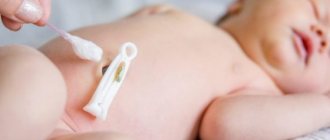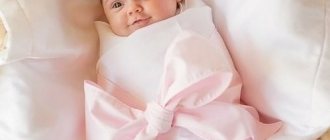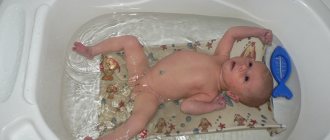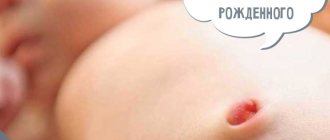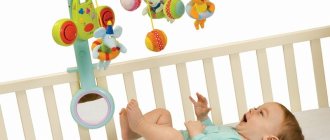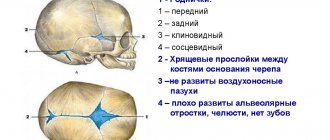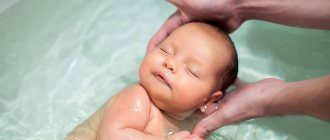December 01, 2016
Averyanova Sveta
Everyone knows what the navel looks like in a healthy two-month-old baby. This is a neat scar inside the tummy, which was left after the umbilical cord was cut and the remaining tissue fell off. But the healing process of the wound and the period of wearing a clothespin on the tip of the cord after birth give parents a lot of anxiety. They worry about how long it takes for a baby’s belly button to heal, on what day a newborn’s belly button falls off, and how to care for the wound afterwards. Let's answer these questions in order.
Why do you need a clothespin?
Immediately after birth, babies have their umbilical cord cut. Only a couple of centimeters of the cord peeks out. The remaining tail is pinched with a special plastic clothespin. The clamp performs several useful functions:
- Protects the wound from infections.
- Cuts off blood flow to the remaining umbilical tissue. This part then happily disappears.
- Tightly fixes the compression of the tissues of the umbilical ring. The navel should not open so that the hole closes and heals.
- Forms a beautiful navel. There are several opinions on this matter, but in most babies the navel is neat and does not protrude.
This is interesting! In Rus', cutting the umbilical cord was given a special magical meaning. The procedure was carried out with a sickle (for girls) or a stone (for boys) blessed on Easter. The umbilical cord was tied with mother's hair or linen threads. Then they sprinkled the wound with the milk of the mother in labor to rid the baby of the evil eye.
How to care for the remaining umbilical cord and umbilical wound
The main thing is to keep the navel area dry and clean. Clean the belly button when changing a diaper or bathing your baby.
Here are some tips worth heeding:
- Keep the remaining umbilical cord dry and clean. Now experts recommend the “dry method” - the remainder of the umbilical cord is in contact with air, it should not be wetted or ointments should be used. You may have heard of a treatment option where the remainder of the umbilical cord is wiped with alcohol, but with the modern approach, the best way is to wait until the remainder falls off naturally. If you have questions, consult your pediatrician.
- Avoid irritation. Try to make sure that the diaper does not come into contact with the remaining umbilical cord. You can fold the diaper waistband or use a disposable diaper with a navel cutout, such as Pampers Premium Care.
- Watch for signs of infection. Transparent discharge, drops of blood and crusts during the healing process of the navel are not a cause for concern. But if you notice any signs of inflammation or your child has a fever, contact your doctor.
- Don't try to tear off the rest. The umbilical remnant should fall off on its own. Don't try to tear it off, be patient.
- Watch for signs of bleeding. When the umbilical stump falls off, you may notice a few drops of blood, and this is completely normal. If there is more blood, contact your pediatrician.
- Do not place a coin on your belly button or cover it with a band-aid. You may come across the opposite advice for preventing an umbilical hernia, but you don’t need to follow it - it can harm the child. If you are concerned about the shape of your belly button or suspect that your baby has an umbilical hernia, consult your pediatrician.
When and how does a clothespin fall off?
The navel may fall off in the maternity hospital before the mother and baby are discharged or at home on the 10th day after the baby’s birth.
This happens differently for everyone. Sometimes at night, when the baby is fast asleep, or during bathing or swaddling. In any case, there is no need to panic or be afraid.
When the clothespin falls off completely, you will see a wound on your tummy. Treat it with hydrogen peroxide and brilliant green. If blood or clear liquid is oozing, blot the skin with a tissue. You can’t put a band-aid on it or wrap your tummy with a diaper at this moment. The wound should remain open for access to oxygen, then the phlegm will quickly disappear.
If the clothespin falls off and the stump is not yet dry, you should reattach the staple. Take the instrument in your hands and wipe it with alcohol on all sides. Treat the skin where the clip was attached with hydrogen peroxide. Put the bracket back. A clothespin may fall off prematurely while putting it on if it is pulled strongly or touched sharply. Carefully care for your baby until the navel falls off, then the clamp will remain in place until the due date.
What to do with a clothespin
Another question that parents have is where to put the clothespin after the tail of the umbilical cord dries out? Mothers share advice and opinions on this matter, talk about customs and superstitions. In fact, you can do this:
- Throw away the staple along with any remaining fabric. This is the most popular solution, especially among dads. The clothespin should be disposed of in a waste container. For memories, take a photo of the staple with the remains of the stump.
- Save as a memory.
Not many parents do this. But there is a belief that the umbilical cord is the connecting link between the heavenly world and the earthly world. By keeping the clothespin in a safe place, the mother protects the baby from misfortunes and diseases. For the same reason, the first hair and baby teeth are considered family heirlooms. - Bury it in the ground. The ceremony is carried out when the child turns 1 month old. In ancient times, it was carried out by women who did not want to have children again. It was necessary to bury the navel of the last child under a dry tree and pronounce a magical spell.
- Place it in the wall of the house (wall it up). Also a witchcraft ritual. Its goal is to make the child calm if he cries a lot, healthy if he suffers from frequent illnesses.
This is interesting! In Rus' there was a custom to tie the remains of the umbilical cord into a knot and store it until the baby starts walking. At 1–2 years old, the child picked it up and tried to untie it. If this worked out, then the baby was considered smart; if not, then he was considered stupid.
How to bathe and change a baby with a clothespin
When putting on a diaper, you must try to ensure that it does not touch the navel.
There are several rules that must be followed while the baby has a clamp on the umbilical cord. This will help avoid tissue hypoxia and the development of inflammation in the umbilical cord area.
If there is a need for swaddling when the baby is restless and prevents himself from falling asleep, this should be done only in the area of the arms, without touching the stomach. This is necessary to avoid tugging and slowing down blood flow. If a newborn falls asleep on his own, it is better not to swaddle him at all, but to put him in a vest and rompers.
When using diapers, you need to choose models that have a cutout for the umbilical cord. Although the advertisement says that the material of the diapers allows air to pass through well, it is still better to leave the wound open - this way it will dry out faster. In the summer, sweat can cause an unpleasant odor due to the growth of bacteria in the wound.
You can bathe your baby if there is no redness around the navel
There are differences of opinion among experts regarding bathing. Therefore, each parent chooses his own tactics - bathe or simply wipe the child. Here you can do the following:
- If the child does not have signs of inflammation in the navel area, you can bathe him, but make sure that water does not get on the wound. It is better to carry out the treatment after the bathing procedure.
- Cover the umbilical cord with a bandage and bathe without fear.
- Do not bathe at all if healing is delayed, and there is redness around the navel, and an unpleasant odor is clearly audible.
It is not recommended to lay the child on his stomach until the umbilical cord has completely healed.
After the clothespin with the remainder of the umbilical cord has fallen off, you can bathe the child in herbal infusions - strings, chamomile. These herbs have an anti-inflammatory effect and help dry out the wound.
Turning onto the stomach until the umbilical cord has completely healed is not recommended. In order for the child to burp air after eating, it is better to carry him upright for several minutes and then lay him on his back.
It is recommended to remove the baby's diaper and baby's undershirt several times a day so that the air baths will help the umbilical cord fall off as quickly as possible. It is advisable to avoid moisture in this area at all.
When the umbilical cord falls off and ichor begins to come out, you need to continue treating the wound and laying the baby out in the air. During the period when a crust forms, it must be removed gradually, without using force. Using a cotton swab and peroxide, the crust will gradually separate and the wound will become clean.
What to do with your belly button when it falls off
The main task of treating the navel after the clothespin falls off is to keep it healthy, help the tissues dry out faster and retract into the tummy. The care method consists of several stages:
Wash or wipe the wound
The child can be bathed in boiled water with the addition of herbs or potassium permanganate. There is no need to wash your navel with soap or try to clean out the folds. Staying the body in water without additional manipulations is enough. If mothers think that bathing should be abandoned, then the outer part of the navel should be wiped with a damp cloth before treatment with medical products.
We disinfect
Use an aqueous solution of chlorhexidine or hydrogen peroxide. Drop the antiseptic inside the wound, and after 1–2 minutes, remove the remaining medication with a cotton pad.
Let's dry it
Smear the skin around and inside with brilliant green. The antiseptic may sting, but if the wound is without pathologies or inflammation, the baby will not cry.
You need to repeat the procedure until the crust from the wound disappears completely. You need to remove the fallen pieces yourself not with your fingers, but with a dry sterile bandage or cotton wool. If the sore doesn’t want to come off on its own, the edges stick out, but the crust remains in place, you don’t need to touch it. Violently peeling off dead skin will cause bleeding and the wound will take longer to heal.
Important! In rare cases, the clothespin does not fall off entirely, but hangs on a thin thread of a dead umbilical cord.
Do not pull or try to remove the bracket yourself. Wait until the drying process is completed naturally; until this point, no more than a day will pass.
What is an umbilical cord remnant and when does it fall off?
While the baby was in the womb, he received nutrients and oxygen through the umbilical cord. When the baby is born, the umbilical cord is clamped and cut. It is not painful because there are no nerve endings in the umbilical cord.
The clip (or "clothespin") usually remains for one to two days. It can be removed as soon as the remaining umbilical cord dries and stops bleeding.
After the clamp is removed, there will be a remnant of the umbilical cord on the baby's belly, which will gradually dry out, harden and turn from yellow to brown-black.
The remaining umbilical cord usually falls off on its own within a few weeks of the baby's birth. If this does not happen within three weeks of birth, contact your pediatrician.
In some cases, there is a reason why the umbilical cord remnant does not fall off, such as an infection or an immune system disorder. A doctor can determine the exact cause.
When the residue falls off, a wound forms. It may become slightly wet due to the fluids released. Keep your newborn's belly button dry and clean and it will heal completely in no time. If the umbilical cord has not healed within two weeks after the remainder of the belly button falls off, contact your pediatrician.
How long does it take for a belly button to heal?
When a newborn's belly button falls off, a small wound remains in the center of the tummy. It may become wet and bleed slightly. This is fine. The ichor stops coming out 2–4 days after the clothespin falls off.
Gradually, the residue will begin to overgrow, the skin will dry out and a crust will form. The remaining fabric should not be torn off, not picked. Any excess should fly off by itself as the wound heals. The navel finally heals in 3–4 weeks.
But mothers still have a question: why did my friend’s son’s clothespin fall off in the maternity hospital, the navel formed in 2 weeks, but for my baby the process is delayed. Several factors influence how long the wound will take to heal:
- Anatomical features of the umbilical cord. In children with a thick cord, the stump takes longer to fall off.
- Baby's weight and due date. In premature and low birth weight babies, the navel takes a long time to heal. This is due to the immaturity of the immune system and the unpreparedness of the small organism for childbirth, if it occurred several weeks earlier. If we compare the timing of navel separation in healthy children and premature babies, they may differ by 2–3 weeks.
- Care process. If the mother follows all the rules for caring for the wound after being discharged home and carefully monitors the hygienic condition of the baby, the navel will dry out quickly. Poorly treated stumps do not crust over for a long time, become wet, can become infected, and smell bad.
- Injuries to the navel tissue. This is the tearing of a crust that has not yet dried, or burns with alcohol solutions to dry the wound. When the clothespin has not yet fallen off, you also need to be careful when dressing an infant. The edge of the staple can be touched by diapers or panties; it will pull on the delicate skin and disrupt the healing process.
- The baby's tummy is always covered with pants and a diaper. In order for the stump to dry out faster, it needs contact with air. Keep your baby naked for several hours a day, cut a hole in the diaper for the belly button. If you do not “ventilate” the wound, a bad smell may appear and the crust will take longer to come off.
If the mother does everything correctly, and the wound continues to bleed, fluid or pus is released from it, you need to sound the alarm. Specific symptoms indicate infection or pathology:
- The skin around the wound becomes red and inflamed.
- An unpleasant, foul odor emanates from the umbilical ring.
- There is purulent type discharge, yellow, green in color.
- The stages of healing of the navel are disrupted: the clothespin does not fall off for more than 10 days, the stump does not retract, the crust does not come off completely 4-5 weeks after the birth of the child.
- The edges of the navel diverge, a gap inside the peritoneum is visible. This is a sign of a fistula.
- There is a noticeable protruding lump in the center of the tummy; there is a feeling that the navel is being untied. It could be a hernia.
- The baby cries, is capricious, and reacts painfully to touching the wound during treatment and bathing.
- The baby develops a high fever.
An unhealed navel in combination with the listed symptoms cannot be cured on your own or you cannot wait any longer, hoping for a miracle. Hernias, fistulas, infections are the prerogative of doctors. For advice and explanations about what is happening, contact the clinic.
If there are no additional signs of pathology, the non-healing wound does not bother the baby and there is still enough time to heal, wait a little. But keep the process under daily control, continue to treat the stump, and use auxiliary wound healing agents.
Important! How not to harm a child when treating an umbilical wound, says Dr. Komarovsky, watch this useful video.
On what day does the belly button fall off in newborns?
Falling off umbilical cord of a newborn
So that mothers do not worry about the umbilical wound, you need to know the stages through which the remainder of the umbilical cord goes through before completely falling off and healing:
- Immediately after the baby is born, the clamp is put on.
- After 4 – 7 days the clothespin falls off. Sometimes this happens after 10 days. Depends on the individual structure of the umbilical cord and the thickness of the walls.
- For another 3–4 days, small amounts of ichor may be released, then it stops.
- The wound gradually dries out and a crust forms. It is removed during treatment of the umbilical cord, but gradually, without damaging the tissue. Over time it becomes less and less.
- The umbilical cord is completely healed. About a month passes when the umbilical remnant of the newborn should fall off.
All this time it is necessary to observe what is happening in the umbilical wound. If improper or insufficient care is taken, an infection can get there.
What to do with a clothespin
Treatment of the navel with Chlorophyllipt
Many mothers are afraid to touch the clamp, although it also needs to be treated and will have to be removed. It happens like this:
- The clamp is removed and hydrogen peroxide 3% is dripped onto the navel.
- Next, you need to disinfect the clothespin – also with peroxide.
- Wipe it with alcohol and set it aside for now.
- The navel is treated with brilliant green, chlorophyllipt or a solution of potassium permanganate.
- The clothespin is attached back.
If the treatment procedure is carried out regularly (1-2 times a day), healing will proceed as planned and no infection will occur.
